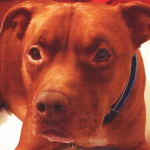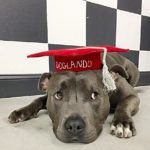As experts in dog law, we have intimate knowledge of this complex area and work closely with an exceptional team of experts to ensure the best possible outcome for owners and their dogs.
There are more than 35 Acts of Parliament that apply to dogs and the extension of the Dangerous Dogs Act 1991 to cover attacks on private property and assistance dogs and the addition of the XL Bully to the list of prohibited types of dog, it is now easier than ever for your dog to get you into trouble. The old adage that every dog is allowed one bite is a myth, and the courts can and do make destruction orders against dogs that have never bitten before. It is therefore imperative that you seek expert legal representation should you find yourself being accused of committing an offence under the Dangerous Dogs Act 1991. By obtaining professional legal assistance from highly experienced dog law solicitors, you can help ensure the safety and well-being of your dog.
Here at Wheldon Law we are all dog lovers and many of us are dog owners. We have a proven track record of successfully defending clients and saving their dogs from destruction. We work with the best canine behaviourists and forensic odontologists in the business and have excellent links with many of the police forces in England and Wales. We are also proud to have been involved in many of the leading cases that have shaped and changed this area of law and resulted in saving the lives of many dogs. If you want further proof, please browse through some of the testimonials from grateful clients or see what they have written on our Facebook page.
Possession of a Prohibited Dog
Section 1 of the Dangerous Dogs Act 1991 states that it is illegal to possess any of the following types of dog:
- Pit Bull Terrier
- Dogo Argentino
- Japanese Tosa
- Fila Braziliero
- XL Bully
The word “type” has a broader meaning than the word “breed” and means that any dog that shares a significant number of the characteristics of the prohibited breed shall be deemed to be a prohibited dog, regardless of its parentage.
Section 1 of the Dangerous Dogs Act 1991
It is an offence to be in possession of any of the types of dog listed above unless they have been granted a certificate of exemption and the conditions of exemption are complied with.
If the court decides your dog is one of the four prohibited types, then it must make a destruction order or, if the court is satisfied that you are a fit and proper person to have a dog of that type and that your dog does not pose a danger to the public, then a contingent destruction order may be made which allows your dog to be exempted from the prohibition. Your dog will have to be neutered, microchipped and have a policy of third-party insurance and you will need to obtain a certificate of exemption from the Index of Exempted Dogs at DEFRA. Once your dog has been returned to you, it will be subject to stringent conditions for the rest of its life, including:
- It must be on a lead and wear a muzzle when in a public place.
- It must live with its registered keeper save for up to 30 days in any 12-month period.
- It must be kept in secure conditions to prevent escape.
- You must notify DEFRA if you move home.
- You must notify DEFRA if the dog is exported or dies.
Failure to comply with these conditions could lead to your dog being seized and you being prosecuted.
Section 4B of the Dangerous Dogs Act 1991
Section 4B of the Dangerous Dogs Act 1991 is the civil equivalent of section 1. This section allows the police to apply to the magistrates’ court for a destruction order, or a contingent destruction order, without the owner being prosecuted. This means that even if a dog owner has been found to be in violation of section 4B of the Dangerous Dogs Act, they can still avoid a criminal record.
In some areas, this section is only used when the owner accepts that their dog is a prohibited type and the police consider them to be a fit and proper person and their dog friendly. However, in other areas, this section is used instead of a section 1 prosecution. Such instances can pose a problem to dog owners as legal aid is not available and the process of seeking expert evidence and representation can be expensive.
At Wheldon Law, we have access to the very best breed identification experts and canine behaviourists. We will do everything in our power to get your dog back home to you as soon as possible. We also work closely with a number of charitable and not-for-profit organisations who may be willing to assist with funding cases.
Importing Prohibited Dogs into the UK
It is not illegal to import a prohibited type of dog into the UK but it is an offence to be in possession of one. At Wheldon Law, we have had great success in advising and assisting numerous owners who wanted to bring their dogs into the UK but feared they may fall foul of the strict rules regarding prohibited dogs. All of these dogs arrived safely in the UK without any problems. Please call us on 01442 242999 or email us at enquiry@wheldonlaw.co.uk for further information as to how we can assist you in this regard.
Appointing a New Keeper for a Prohibited Dog
If you are the owner of a prohibited type of dog that has not been registered on the Index of Exempted Dogs or one where the conditions of exemption have been breached and the dog is no longer exempt, then there are very limited circumstances in which a person other than its owner can be appointed as the registered keeper. If the dog is coming before the court for the first time, then the only person that can apply to the court to be the registered keeper is either the owner or the person in charge at the relevant time. The person in charge at the relevant time usually means the person from whom the dog was seized or a person who has had significant responsibility for the dog in the past (e.g. a family member, a previous owner or someone who has looked after the dog in kennels).
If a dog is already registered on the Index of Exempted Dogs and the registered keeper dies or becomes seriously ill and unable to look after it, it is possible to apply to the court for a new keeper to be appointed. In this situation, a stranger can be appointed to become the keeper of the dog, provided the court is satisfied that the dog does not pose a danger to the public and the new keeper is a fit and proper person.
The restrictions on changes in keepership results in the deaths of many good-natured and friendly dogs who are unfortunate enough to share some of the physical characteristics of the prohibited types of dogs. At Wheldon Law, we have dealt with numerous applications to the court for a change of keepership. As a result, we have a wealth of experience of guiding people through the process, making the application and providing representation in court. We also have many years of experience dealing with cases involving prohibited types of dogs and we have been involved in many of the leading cases that have shaped and changed this area of law. In 2017 we were involved in a landmark case that changed the law allowing for a relaxation in the rules regarding changes of keepership which has saved the lives of many dogs.
If you find yourself unable to become, or continue to be, the keeper of one of these types of dogs, it is vital that you seek advice from an experienced dog law solicitor at any early stage. Please call us on 01442 242999 or email us at enquiry@wheldonlaw.co.uk for free initial telephone advice.
Dogs Dangerously Out of Control
Contrary to what the media would have us all believe, most people whose dogs get them into trouble are caring and responsible dog owners. They have never been in trouble before and their pets have never put a paw wrong.
Under section 3 of the Dangerous Dogs Act 1991, an owner, or a person in charge of a dog, commits an offence if the dog causes reasonable apprehension that any person will be injured, whether or not they actually are injured. Unlike most offences in English law, no criminal intent or recklessness is required for liability to arise and a person can therefore be guilty of an offence even if their dog was on a lead and had never behaved in such a way before.
Where no injury is caused, the case may only be dealt with in the magistrates’ court and the maximum penalty is 12 months imprisonment and/or a fine of £5,000. The court has the power to order the dog to be destroyed or kept under control and it may specify the measures for control (e.g. keeping the dog on a lead in public). The court can also disqualify an individual from keeping dogs and order compensation to be paid to the victim.
If your dog injures a person or an assistance dog (e.g. a guide dog), then this is a more serious offence which is known as the “aggravated” offence. The injury does not have to be a bite; a scratch or bruise would suffice. The aggravated offence can be dealt with in either the magistrates’ court or the crown court and the maximum penalties are as follows:
- Injury to an assistance dog – 3 years’ imprisonment
- Injury to a person – 5 years’ imprisonment
- Death of a person – 14 years’ imprisonment
You could also be ordered to pay a fine and/or compensation and the court has the power to disqualify you from keeping dogs.
When an “aggravated” offence has been committed, the court must order the dog to be destroyed unless it is satisfied that you are a suitable owner and that the dog does not pose a danger to the public. Expert evidence from a suitably qualified animal behaviourist will usually be required on this point.
The police have the power to seize your dog and keep it pending the outcome of the case. At Wheldon Law, our experienced dangerous dog solicitors have excellent contacts within the police and we are sometimes able to persuade them to return dogs to their owners (with appropriate conditions) pending the outcome of proceedings.
Defences
A defence is available to the owner of the dog to show that they left the dog in the care of someone they reasonably believed to be a fit and proper person.
If the incident occurred in, or at least partly in, a building which is a dwelling (or forces accommodation) and the person injured was a trespasser who was inside, or partially inside, the property, then there may be a defence available. This is known as the ‘Householder Defence’.
If you are under investigation or have been charged with an offence under section 3 of the Dangerous Dogs Act 1991, our team at Wheldon Law will be able to help you and the sooner we become involved in your case, the more we can do to assist.
Dogs Worrying Livestock
Dogs (Protection of Livestock) Act 1953
An offence is committed by the owner or person in charge of a dog if it attacks or chases livestock on agricultural land or if it is off-lead in a field containing sheep. The definition of livestock includes sheep, goats, cattle, poultry, pigs and horses. The definition of agricultural land is wide and extends to include allotments and orchards. The police have the power to seize a dog if they are unable to identify its owner. The maximum penalty is a fine, but it is possible to lay additional proceedings at the same time that could result in a destruction order.
Expert evidence is essential in cases of this kind as the courts take an understandably serious view when livestock has been killed. As specialists, we have successfully defended numerous cases of this type and always instruct an animal behaviourist with particular expertise in dogs with a high chase-and-prey drive.
Dogs Not Kept Under Proper Control
Section 2 of the Dogs Act 1871
Civil proceedings can be initiated against the owner of a dog that is dangerous and not kept under proper control. The dangerousness alleged relates to its effect on people or animals and the legislation applies to incidents in both public and private places. Because the proceedings are civil in nature, the court cannot impose a penalty on the owner or order them to pay compensation but they can order the owner to pay the costs of bringing the application and order the dog to be destroyed or kept under proper control (e.g. by keeping it on a lead in public). These proceedings can only be brought against the owner of the dog, but the application can be brought by anyone. The application must be made to the court within six months of the incident and it must be in a particular format as otherwise the proceedings will be invalid.
In 2014, the Dangerous Dogs Act 1991 was extended to cover private and public places, and this has seen a reduction in the use of this piece of legislation. However, it is still useful, particularly if a client is charged with a criminal offence and wishes to avoid having a criminal record upon conviction. It is sometimes possible to persuade the Crown Prosecution Service to substitute the criminal proceedings with civil proceedings, thus avoiding the possibility of a criminal record.
Case Study - Dax
Dax’s owner sought advice from a professional dog trainer who advised using an electronic collar to train him. When a child approached Dax, the trainer activated the collar and Dax bit the child. The trainer then denied responsibility and our client was prosecuted. We argued that our client was not in charge of Dax at the time of the offence and our client was found not guilty after trial.
Case Study - Arthur
Arthur was seized by police after he nipped a tradesman working at his owner’s home causing a very minor injury. We contacted the police on the owner’s behalf and were able to persuade them not to prosecute and Arthur was returned home the same day subject to some conditions for his future control.
Case Study - Pepita
Pepita was said to have been one of five dogs involved in killing an elderly lady. We adduced evidence from a bite expert that Pepita had not been involved in the attack and it was spared destruction.
Case Study - Saachi
Saachi was alleged to have run at someone knocking them over and causing an injury to their knee. His owner denied the allegation and was found not guilty after a trial in the magistrates’ court.
Case Study - Shai
Shai nipped someone whilst he was being walked by his owner. We attended the police station with Shai’s owner and when the police heard the full circumstances of the incident, they were easily persuaded to take no further action against the owner.
Case Study - Snoop
Snoop has been a customer of ours on two occasions. The first time he was seized because he was a pit bull type dog and the second was after he escaped from his owner’s rear garden and alarmed someone by barking at them. The prosecution sought Snoop’s destruction but we were able to persuade the court to allow him to return home subject to conditions.
Case Study - Sky
Sky was a legal pit bull type dog that had been through the court exemption process. Her owner placed her in kennels and then went travelling and chose not to return to the UK. A volunteer at the kennels formed a bond with Sky and wanted to become her registered keeper but the court made a destruction order against her. After a successful judicial review of the case, Sky was eventually allowed to live with a new keeper.
Case Study - Ripley
Ripley’s owner wanted to move from Florida to England but was worried that the dog might be deemed to be a pit bull type in the UK. We arranged for one of our experts to travel to Florida to assess Ripley and he found him not to be a pit bull type. A copy of our expert report was provided to the police and thereafter we liaised with them over his arrival in the UK to ensure everything went smoothly.
Case Study - Angel
Angel was handed into a rescue centre, but was then found to be a Dogo Argentino. The police sought a destruction order despite her having a lovely temperament and there being an employee at the rescue centre willing to become her registered keeper. Fortunately we were able to persuade the court to make a contingent destruction order allowing her to go and live with her new keeper.
Civil Dog Law
Civil dog law cases can vary enormously and our dog law specialists have dealt with all manner of issues, from dog ownership disputes and problems with barking dogs to claims for personal injury and damage to property.
Planning Issues
Residential property comes with planning permission for its use as a residence for people. If a person has a large number of dogs living on the premises, the local authority can intervene and require them to reduce the number of dogs living there. The maximum number is not set in stone, but as a guide anything over six can potentially be a problem.
Dog Barking Complaints
Of course, it is completely natural for dogs to bark. However, excessive barking can lead to action being taken by the local authority. You could find that you are served with a Noise Abatement Notice which, if not addressed immediately and appropriately, could mean that you are prosecuted under the Environment Protection Act 1990 and required to pay a heavy fine.
Local authorities also now have the power to serve Community Protection Notices in circumstances where the community is affected by what is deemed to be anti-social behaviour. A warning notice must be served first, setting out the unacceptable behaviour alleged and what steps must be taken to remedy the issue. Failure to comply with the warning notice will usually result in a Community Protection Notice being served which will again set out the problematic behaviour and the steps to be taken to remedy the problem. Failure to comply with the notice can result in a fixed penalty notice being issued or a prosecution being brought with a maximum penalty of a fine of £2,500.
In addition to the steps above, tenants can find that their landlords withdraw permission for them to have a dog on the premises.
Wheldon Law Can Provide the Legal Assistance You Need
For many people, dogs are not just pets, they are an important and beloved member of their family. As such, we must strive to ensure that their safety and well-being is always protected. Unfortunately, despite dog owners’ best efforts, accidents and mishaps do still occur. However, if your dog does happen to cause a problem, there’s no need to worry as Wheldon Law will be on hand to offer our legal expertise. We will provide the expert guidance you need to ensure the best possible outcome for you and your dog.
Call us today on 01442 242999 for some free initial advice to our solicitors in hemel hempstead, or email us at hello@wheldonlaw.co.uk









